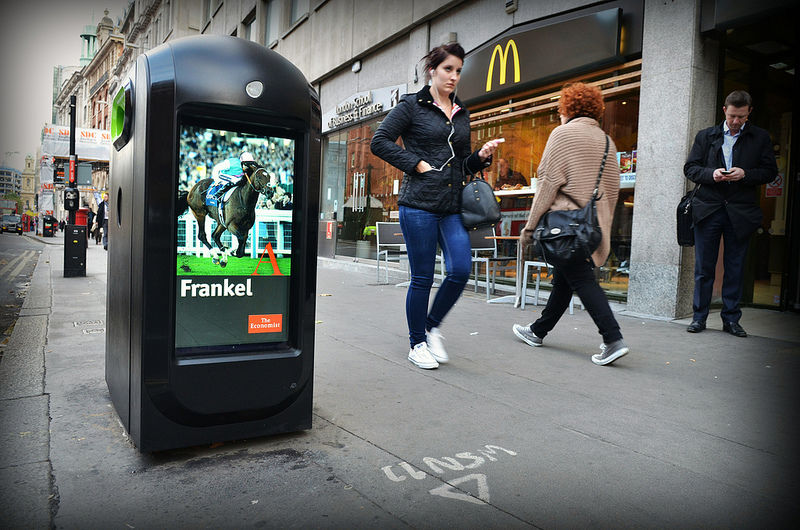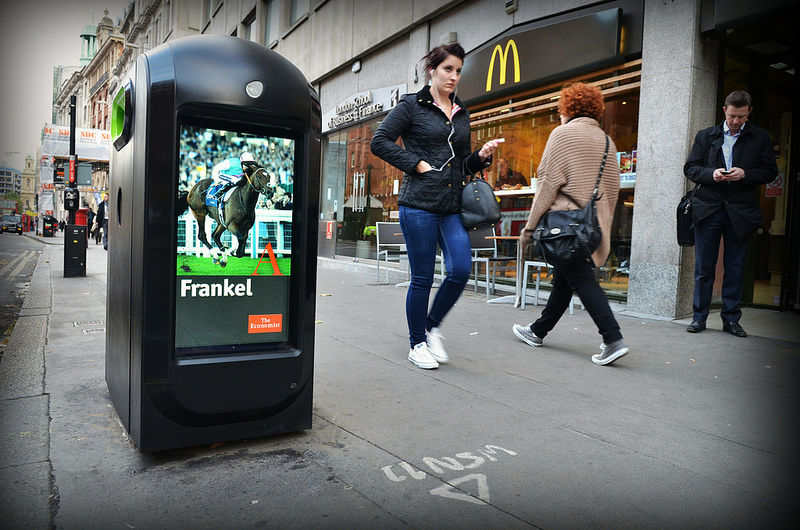
Webconverger’s Neon Uses Stable, Secure Browser As Digital Sign Platform
July 10, 2013 by Dave Haynes

I was in the middle of one of those sessions online where you start in one direction and then make a whole bunch of left turns and end up somewhere completely different, and came across some narrative about the little Raspberry Pi micro PCs, digital signage and a company called Webconverger.
That was an unfamiliar name, so I clicked through and found this site and assertion: Neon turns your PC into a Digital Sign, with the stability of Linux and HTML5 Web browser support.
Hmmmm.
The company describes its Neon product as “a drop in replacement for the sluggish and typical unmanageable Windows 7 install. Neon boots your hardware, connects to the Internet and renders your Digital Signage homepage. We ensure that the browser supports the latest HTML5 standards. We ensure Neon is secure and stable. We also monitor the uptime of your machines, which you can see via a convenient Web control panel.”
So here we had a system that really is a web page or pages, but also has the back-end management piece that mainstream signage software systems would argue is mostly missing from browser-based signage offers.
I sent a note around to Kai Hendry, the company’s Managing Director, and he kindly provided answers to a set of questions.
Can you summarize in not-too-technical terms what Webconverger is about?
Webconverger started its life as a Windows replacement for getting online via a Web browser in public places. Unlike typical Web kiosk deployments on Windows, Webconverger is much more secure and easier to manage.
How does it apply to digital signage?
Since Webconverger was built to reliably boot a browser, if you take away the chrome user interface, you are basically left with a signage product. Our Windows based competitor SiteKiosk does the same. The Web lends itself to Digital Signage. The Web platform is designed to discern information and that’s what good signage should do too.
[highlight color=”eg. yellow, black”]<Warning: Propellerhead Talk Ahead!>[/highlight]
I am just trying to wrap my head around your product and what it does. As far as I can tell this allows a user to build a digital sign application as an HTML web page and then display it in Firefox kiosk mode, locking down any external peripherals or whatever from messing with that.
On PI we are using a browser based on http://surf.suckless.org/ which is a very lean Webkit shim. We may even switch to blink. Need customers to indicate what they might want here. In x86 Webconverger we are still using Firefox for the time being.
Does it also locally cache the content?
Using HTML offline capabilities. File API or Appcache for e.g. the device can work after a power/network outage. We just provide the browser and it’s upto the client to develop the Web application. We can advise and we do participate in public-websignage@w3.org working groups to further concrete Web applications as the future for digital signage.
[highlight color=”eg. yellow, black”]<Normal Reading Resumes>[/highlight]
What’s the big selling point to using this system versus other digital signage software options out there?
We are simpler. Most digital signage vendors out there lock you into their proprietary media formats or hardware. We say to our customers, please get the commoditized hardware yourself and furthermore please build a Web page with information on it. Of course we can help customers realize both, though we are focused on the operating system.
Unlike our competitors, we have a steady roadmap. We seamlessly upgrade our clients using our in house developed gitfs technology, which also allows downgrades. Our customers enjoy up-to-date browsers with the occasional performance boost or new feature. A lot of competitors seem to be happy to leave customers with increasingly ancient and frustrating browsers to work with.
Can you provide some background on the company and the Webconverger development history?
The company was formed in 2007 in the UK and our dedicated signage product ‘Neon’ was launched in 2012. Our development is open source and public history is here: https://github.com/Webconverger/webc/commits/master
How is it priced?
Webconverger Neon has more active monitoring in the backend and currently we are charging $30 USD a month for that extra monitoring. So customers can be alerted to when a display machine goes offline, which is important in DOOH management. If you don’t need this active monitoring, you can use the base Webconverger for $10 USD per month per machine like many of our customers already do.
Pricing: http://webconverger.com/pricing/
Is this a product for small projects or can this handle enterprise-grade accounts?
We handle everything from individuals to Enterprise grade accounts. Our configuration management system is scalable to hundreds and thousands of devices. We have several government clients and I don’t think it gets any more “Enterprise grade” than that, now does it? 😉
What’s your view on the next 18-24 months in the digital signage sector, in terms of technology trends and direction?
TVs will increasingly have integrated Android browsers. Of course the Android TV installs won’t be streamlined for Web signage. There will be really awkward setups every time the TV boots up to get it reliably pointing to a homepage for Web signage. The big problem with Android is the performance on big screens, nonetheless I think it should serve signage use cases rather well going into the future.
We would like to be able to flash an appropriate version of Webconverger onto these TVs, though I’m worried that TV vendors will make this difficult to do. They are making this hard on PCs again too (“secure boot”) and hence raising the barrier for small companies like ourselves to deploy our streamlined solution to the market.
[youtube id=”3SJb9RESlaY” width=”600″ height=”350″]
Do you see Raspberry Pi-style devices as fully viable for commercial applications?
The latest 512 MByte (Model B rev 2) is under-powered. As our video demonstrates, it’s OK for simple text orientated Web signs like a departure/weather board or a currency exchange list, but nothing flashy.
The trouble with ARM hardware is that they are all generally different and optimizing each one is incredibly labour intensive. For now we focus on x86 architecture since it’s far easier to get great performance.
If we had a client that wanted to deploy on 100s of the same ARM device, then we could work with that on the basis of scale. Likewise if we had the right support, I’m confident we could improve Web signage performance on the Pi.
——–
It’s a small company – just four people, with two in Singapore and two in the U.S. If you want to reach out: sales [at] webconverger.com
While the company is small, it is not a start-up, having been around since 2007 and has loyal customers who like its use as an open but very secure Web kiosk.



Leave a comment